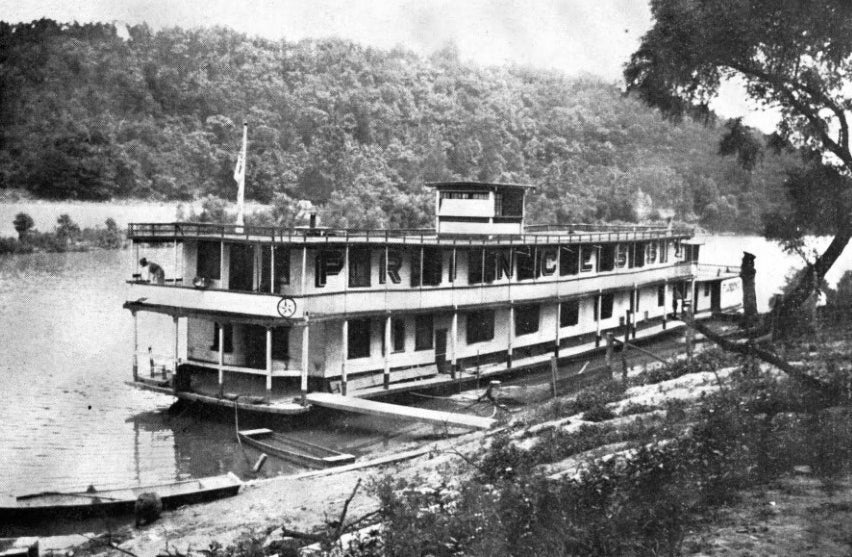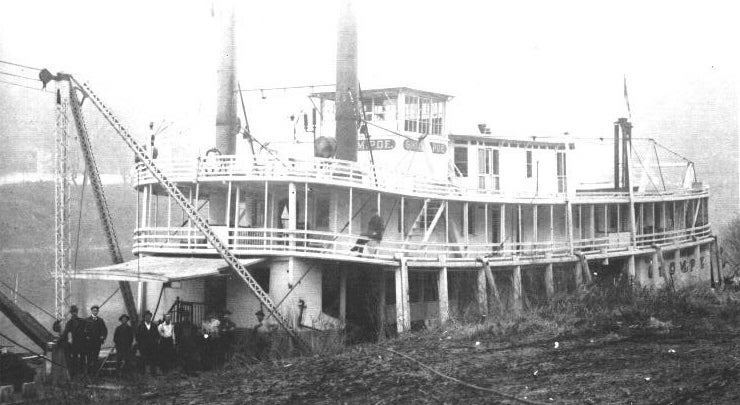ENOCH: Steamboats on the Kentucky River
Published 12:48 pm Friday, June 19, 2020
|
Getting your Trinity Audio player ready...
|
Steamboats on Kentucky River? Yes, it’s true, and there is ample information regarding the steamboat era.
The first source is a column that appeared in The Winchester Democrat of 1898 in which an unnamed author recited the history of river trade on the upper end of the Kentucky River.
The most famous early steamboat on the Kentucky River was the Blue Wing, piloted by Harry Innes Todd of Frankfort. It was a classically turned out riverboat.
“After a varied career on the Mississippi and the Ohio rivers (Todd) returned to Frankfort and built for the Kentucky and Ohio river trade the first Blue Wing,” the article states. “This boat he fitted out as handsomely as were the larger steamers on southern waters. The linens and the silver, the cabin furnishings and the piano were the best procurable. This was really the first comfortably fitted out little steamer that ever ascended the Kentucky.”
In the early 1840s, Todd navigated the first Blue Wing upriver during high water to a point just below Irvine — a day long remembered by the citizens who witnessed the event.
“When the Blue Wing first ascended the Kentucky river the natives along the river banks and on the low farm land on either side were thrown into ecstasies of delight when she passed,” according to the article.
Sadly, no photographs survive.
The first Blue Wing later sank. It was said that “as fast as one Blue Wing was sold or burned, another Blue Wing would arise, Phoenix like, to take its place.”
Several Clark Countians got into the river trade.
Shortly after the Mexican War, Lewis Clancy of Vienna owned and ran the Monterey on the river.
In 1868 or 1870, Robert Elkin built and operated the Daniel Boone.
In the fall of 1871, Capt. John C. Creed of Pinchem helped others fit out a boat called Beattyville at the mouth of Muddy Creek.
The following spring, Creed built his own boat, the unfortunate Matt Adams.
After sinking with a load of goods at Heidelberg, he got the boat back to Muddy Creek, where it sank for good.
Creed, joined by J.D. McIntyre, took the machinery from Matt Adams and built another boat. They did a good business for several years.
Then, in 1874, after unloading her freight at Old Landing in Estill County, the boiler exploded. The pilot was blown into the river and the cook’s body was found in a willow tree. This ended Creed’s river boating career.
Another story involved the Leslie Combs, piloted by Joseph Shepherd.
In 1872, he pushed a tow of barges up to the mouth of Miller’s Creek in Estill County. Just as he started back downriver with a load of iron from Red River Iron Works, the Dora passed by, and soon, a race was on.
The Leslie Combs caught up in a narrow section of the river, and then coming into a turn, Shepherd faced an unpleasant choice: ramming the Dora or risking passage over a big rock. He chose the latter, and the rock tore a huge hole in the side, sinking the boat.
The L.D. Parker retrieved the barges and floated them downriver. “She was a stout little craft and did excellent service” on the Kentucky.
The Frankfort Yeoman carried a “River News” column for many years. In 1873, it ran a series of reports about a boat serving the iron works.
“The Billy Parsons is going to Red River Iron Works for the purpose of towing iron boats from that landing to Muddy Creek landing on Kentucky river (Jan. 16),” the article states.
“The little stern-wheel Billy Parsons arrived here yesterday morning from Red River Iron Works, where she has been employed all winter. The Parsons is probably the smallest stern-wheeler afloat. It is neither as long nor as broad, by many feet, as one of the ordinary coal-barges lying by it yesterday. (April 19)”
Iron from the furnace was off-loaded at Jackson Ferry and hauled by wagon to Winchester, where it was loaded onto cars of the Elizabethtown, Lexington and Big Sandy Railroad (later became the C&O).
Capt. Charles Johnson of Frankfort left a memoir describing a number of steamboats: “Carrollton was home port for a screw-wheel passenger yacht, 90 feet long, Scotch Marine boiler, if I remember. Her name was Idlewild. Later, she was the Juanita, still later the Greyhound. Broke everybody who owned her. She made excursions up the Kentucky River as far as Boonesboro, Lock #10. She could make about 30 miles per hour, had a wild-cat whistle, the first in this part of the country, and she sank more shanty boats and john-boats up the deep narrow Kentucky River than all other boats before or since, with her waves.”
Lock 10 opened in January 1905, and disaster struck in March when a cascade of saw logs and ice scoured out the west bank leaving the lock in the middle of the river. The snagboat that worked while building the lock and on the repairs was the General O.M. Poe.
In the winter of 1911, Capt. Billy Bryant’s showboat, Princess, docked at Boonesborough and other river towns offering vaudeville performances, musicals and melodramas.
Numerous other named steamboats are known to have worked the river.
The trade eventually was killed off by the railroads, which could serve river towns more efficiently and economically.
We cannot close without mentioning the boat submerged in the river below Hall’s Restaurant.
This sunken wreck near the Clark County shore was a stern-wheeler towboat known as the Brooklyn. It was built at Jeffersonville, Indiana, in 1930 as the Helen H.
This diesel-powered boat worked under various names on the Mississippi, Ohio and Cumberland rivers.
In 1960, Capt. John Donaldson of Nicholasville purchased the boat and renamed her the Brooklyn. He later sold it to Linville Puckett who used her for a marina and beer depot near Boonesborough.
The boat sank in 1977. An effort to refloat the vessel in 1986 failed.
Harry Enoch, retired biochemist and history enthusiast, has been writing for the Sun since 2005. He can be reached at henoch1945@gmail.com.








